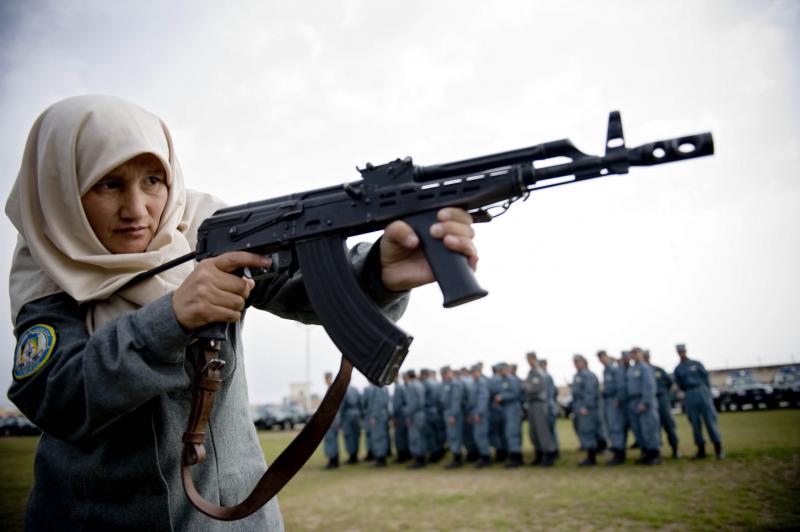
In Afghanistan, the United States and its allies have dealt the cards and made their bets lying as if in suspended animation while events on the ground unfold.
Given the Obama administration’s ambiguous statements over next year’s force reductions, taken as a lack of U.S. commitment in Kabul and Islamabad, last week’s announcement of a delay in starting Kandahar operations wasn’t welcomed news. Nor were reports of further failure by the Karzai government to provide “government in a box” as well to recruit and train its security forces reassuring.
The remaining 15,000 U.S. troop buildup has yet to arrive. The Obama administration has stated that it will complete its next Afghan assessment in December after the mid-term congressional elections.
We are watching, waiting and running out of time there.
The Obama administration understands that success in Afghanistan requires success in Pakistan in part to deprive Taliban of any sanctuary. Put in starker terms, Pakistan is seen as the strategic center of gravity for the region. Implied is the expectation that if all doesn’t go well in Afghanistan, Pakistan is the barrier to the spread of Taliban extremism and a cap on al-Qaida.
Unfortunately, for all the rhetoric including the strategic dialogue with Pakistan, the United States seems paralyzed in providing Pakistan the aid and support it needs to deal with the economic and insurgent-based crises it faces. So far, compared with American spending on Iraq, Afghanistan, General Motors and the big Wall Street banks and insurance companies such as AIG, Pakistan has received a tiny proportion, something that rankles Islamabad and is dismissed by Congress.
What to do? In Afghanistan, U.S. strategy has been to disrupt, dismantle and defeat al-Qaida while the Karzai administration extends governance, meaning basic services and security, across the country — something it isn’t doing.
In reality however, the Taliban, not al-Qaida, are pivotal. And solutions to the Taliban insurgency can only arise from dealing with the Pashtun populations and their enfranchisement. Pressurizing the Taliban to negotiate also runs counter to their culture of Pashtunwali — a lesson we should have learned after Sept. 11, 2001, when the Taliban refused to give up Osama bin Laden.
As December approaches and we stir from this condition of suspended animation, these strategic flaws could prove fatal or at best only damaging. As we recalibrate what to do from that point on, our options will be largely limited around a staged Afghan withdrawal with uncertainty about Kabul’s ability to govern or to contain the Taliban and war lords throughout much of the country. And focus will shift to Pakistan and how it is coping or has coped with grave power and growing food shortages that will reach a crisis point this summer; a restless population with large radical elements; and the intensifying insurgencies now infecting Punjab, Pakistan’ richest province.
Pakistan has made clear what it needs. To many Americans, Pakistani pleas as Oliver Twist did for “more” are overly selfish, insensitive and unwarranted our largess as Congress and much of the U.S. public view it. Yet, despite Pakistan’s crucial role in the region, the United States is paralyzed to act accordingly.
Pakistan has made three major requests. First is greater market access through textile tariff relief. Second is for greater loans from the World and Asian Development Bank. And third is for military equipment including significant numbers of modern helicopters, electronic detection and surveillance systems and basic kit for soldiers such as armored vests and night-vision goggles.
Textile tariff relief for Pakistani cotton products would have powerful, positive and immediate economic and psychological impact. Because relief would come from altering quotas for imports of other states, not a single penny would be lost by American cotton growers. But Congress is opposed.
The United States could encourage international banks to increase lending to Pakistan. And, of course, if the Pakistani military is to embark on operations in North Waziristan to take on Afghan Taliban fighters as we want them to do, they need equipment. So far, it has been very difficult to get Pakistan that equipment despite often heroic efforts by senior officers in the Pentagon.
Faced with a case of suspended animation in Afghanistan at least until the December assessment and paralysis in getting Pakistan the tools it needs to do the job, favorable outcomes are at best in doubt. The White House and NATO remain optimistic about Afghanistan turning out as we hope with senior officials acknowledging that while this will be “a close run thing” chances of success are better than 50-50.
Unsurprisingly, the memory of Vietnam looms. There, a combination of suspended animation that reached a state of denial of reality and paralysis in taking effective action doomed us. We hope otherwise in AfPak. But, tragically, hope is not a strategy.
Harlan Ullman is an Atlantic Council Senior Advisor and chairman of the Killowen Group that advises leaders of government and business. This column was syndicated by UPI. Photo credit: UPI/Hossein Fatemi.
Image: afghan%20police1_0.jpg
